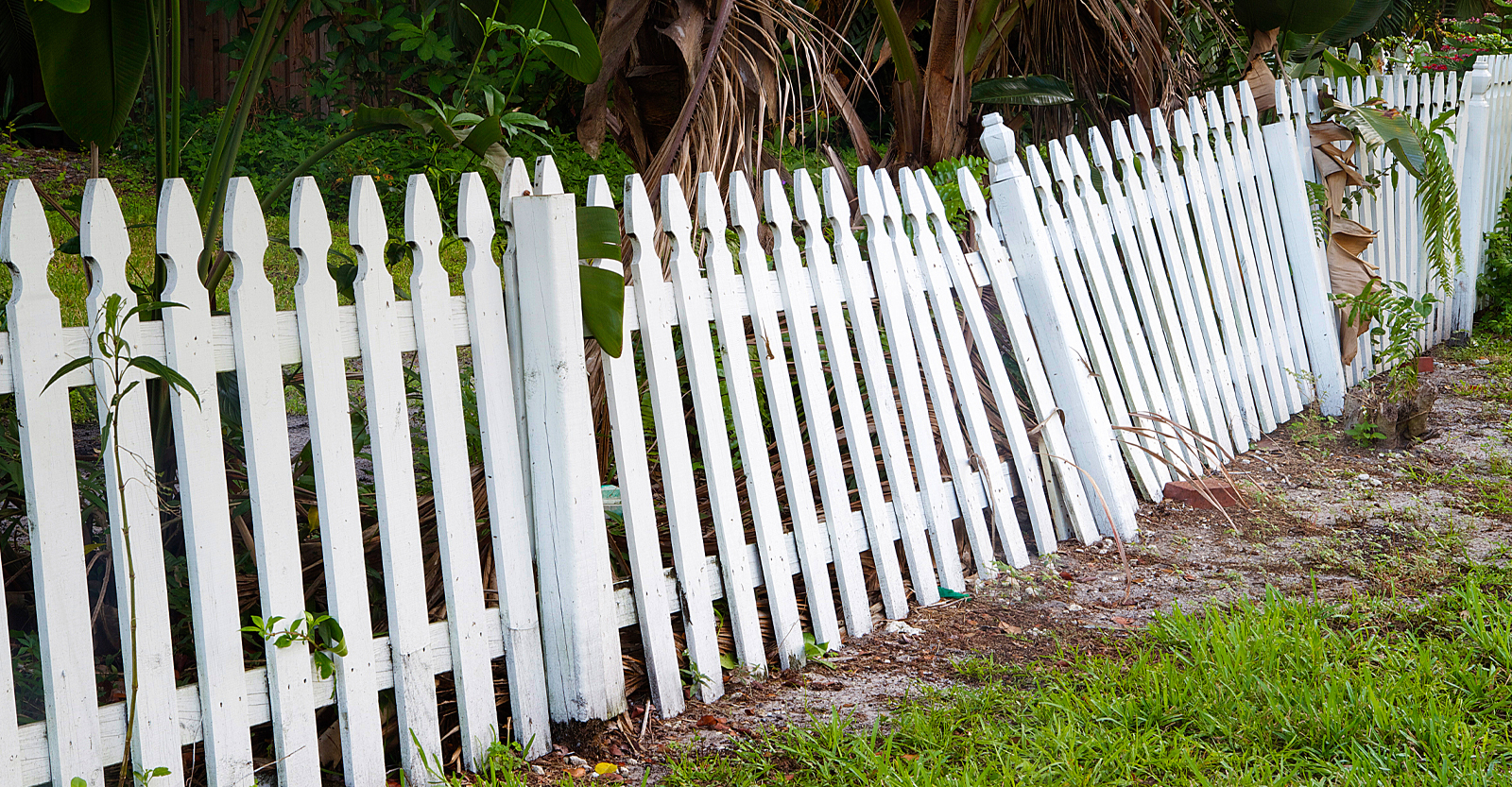
Hurricane Fence Damage Recovery: What Insurance Covers and How to Maximize Your Claim
April 11, 2025 — Disaster insights | Homeowner insights | Insurance insights
Hurricanes are powerful forces of nature that can leave a path of destruction in their wake, and a fence is often one of the first things to take a hit. Hurricane fence damage not only compromises your property’s security and privacy but can also result in unexpected expenses. Understanding how to assess and document hurricane fence damage is essential—and knowing how your homeowners insurance can help is just as crucial.
Let’s dive into what’s covered in a standard homeowners insurance policy for a damaged fence, details on wind coverage and fence damage, and what to consider when filing a claim for hurricane fence damage.
DOES HOMEOWNERS INSURANCE COVER FENCES?
Homeowners insurance typically covers fences, but coverage depends on the cause of the damage and the terms of your policy. Here’s how it works:
Covered Events: Most policies cover fence damage caused by named perils like storms, wind, hail, fire, falling trees, or vandalism.
Excluded Events: Damage caused by wear and tear, neglect, termites, or earthquakes is usually not covered.
Policy Limits: Coverage for fences is often a percentage of your dwelling coverage limit, so be aware of any caps on the amount your insurer will pay. In some cases, you may have a separate windstorm policy, which may have specific limits for fences, so verify how much coverage is available.
Deductibles: You’ll be responsible for paying the deductible before your insurance covers the rest of the repair or replacement costs of a covered loss. If you experience a windstorm and have no other damage to your home outside of your fence, the cost of the fence repair could be less than your deductible.
Flood Damage: A damaged fence from flooding is typically not covered under standard policies but may be covered by a separate flood insurance policy.
HOAs: If you’re part of a homeowners association (HOA), check if the fence is the property of the HOA and covered by their insurance or if it’s considered part of your property.
IS WIND DAMAGE TO A FENCE COVERED BY INSURANCE?
Most standard policies cover fences under the “other structures” section for damage caused by a covered peril, such as a windstorm or hurricane. Remember that coverage is subject to your policy’s limits and deductibles, making it essential to review your policy or contact your insurer for details. Additionally, if you have a separate windstorm insurance policy, it may cover this type of damage. If you’re wondering does home insurance cover fence damage from wind, it’s important to understand the specifics of your policy.
How Fence Material Affects Coverage
An important component of your policy’s coverage relates to the type of material used for your fence. Whether it’s wood, vinyl, metal, chain link, or composite, the material can significantly affect your insurance coverage. Materials like vinyl and aluminum are more durable and resistant to weather-related damage, while wood fences are more vulnerable to rotting, warping, or being blown down in high winds. This difference can affect how your insurer evaluates the damage and the potential payout.
If you have a wooden fence that is weathered or painted and a portion is damaged by wind, insurance will typically only cover the affected section. Any upgrades or full replacements would be the homeowner’s responsibility. However, fences made of newer, more durable materials maintain value over time, potentially leading to a higher payout in the event of damage.
CONSIDERING FILING A HURRICANE DAMAGE FENCE CLAIM?
Here are important factors to consider before filing an insurance claim for fence damage:
Whose Fence Is It?
Before filing a claim for hurricane fence damage, it’s crucial to determine who owns the fence. Does it belong to you, your neighbor, or is it shared? Property lines and local regulations can dictate ownership, which affects who is responsible for repairs. If the fence is entirely on your property, it’s likely your responsibility. However, if it straddles the boundary line, it might be a shared expense. Filing a claim for a fence you don’t own could lead to a denied claim. Understanding ownership upfront ensures you handle the damage, and the claim, the right way.
To figure out whether a fence belongs to you or your neighbor, here are some steps you can take:
- Check Your Property Survey: This document, often provided when you purchase a home, outlines property boundaries. If the fence is entirely on your side of the line, it’s likely yours. If it’s on the boundary, it may be shared.
- Look at the Fence’s “Good Side”: In many places, the finished, smoother side of the fence typically faces outward, toward the neighboring property, meaning the owner usually has the posts and supports facing their own yard.
- Review Your Deed or Plat Map: These documents, available from your local county recorder or assessor’s office, can clarify where property lines are located.
- Check Local Ordinances: Check local ordinances to understand fence ownership and responsibilities. Rules may cover boundaries, maintenance, height restrictions, and permit requirements. Your city or county’s zoning or building department can clarify any unclear regulations.
- Ask Your Neighbor: Sometimes, the simplest way to find out is to have a friendly conversation. Your neighbor might know who originally installed the fence or if it was built as a shared cost.
If you’re still unsure, you can hire a land surveyor for a professional boundary assessment.
Is it an Attached or Detached Fence?
Understanding whether your fence is attached or detached from your home is crucial when filing a property insurance claim, as it affects how your policy will cover the damage. Attached fences, such as those connected to your home or garage, are typically considered part of your dwelling and fall under Coverage A, which often provides broader protection, including replacement cost coverage. This means the insurer will pay for the full cost of replacing the fence without factoring in depreciation.
However, detached fences usually fall under Coverage B for ”other structures,” which may have lower coverage limits and could be subject to a separate deductible. In addition, Coverage B might provide actual cash value (ACV) instead of replacement cost, meaning the insurer will deduct depreciation from the payout, resulting in a lower reimbursement.
Your Policy Coverage
Check your homeowner’s insurance policy to see if fence damage is covered and whether wind or hurricane-related damage is included. Look for details on deductibles and coverage limits.
Get an Estimate for Repairs
Get quotes from contractors to understand how much repairs might cost. Compare this to your deductible to decide if filing a claim is worth it. If the repair cost is close to or less than your deductible, paying out of pocket may be a better option.
If the costs are close, consider the impact of filing a claim. Having a claim on your record could affect your future premiums. If the damage is minor, weigh the long-term costs of a potential rate increase against paying for repairs yourself.
Hurricane fence damage can be a complex issue when filing a property insurance claim, and understanding your coverage is essential.
